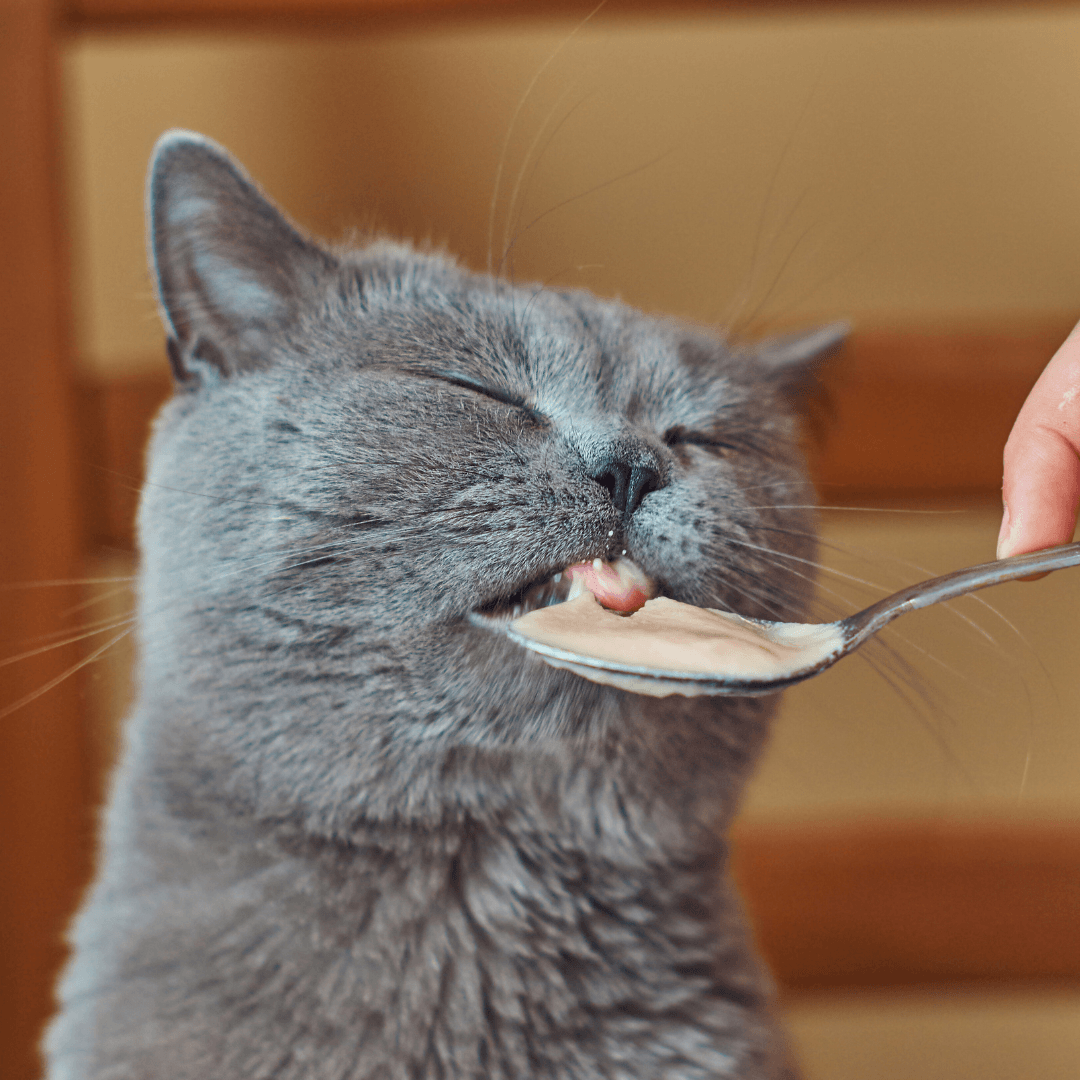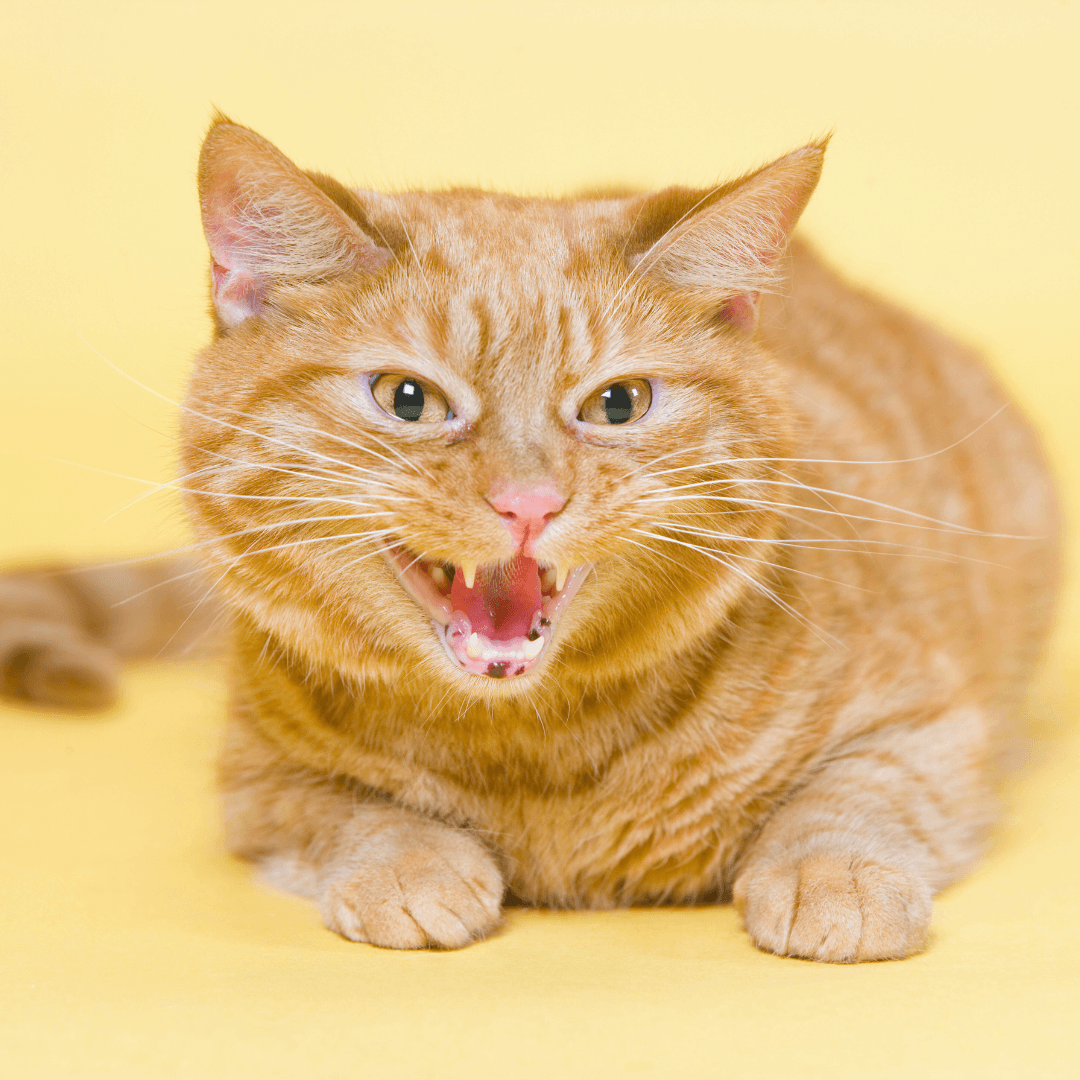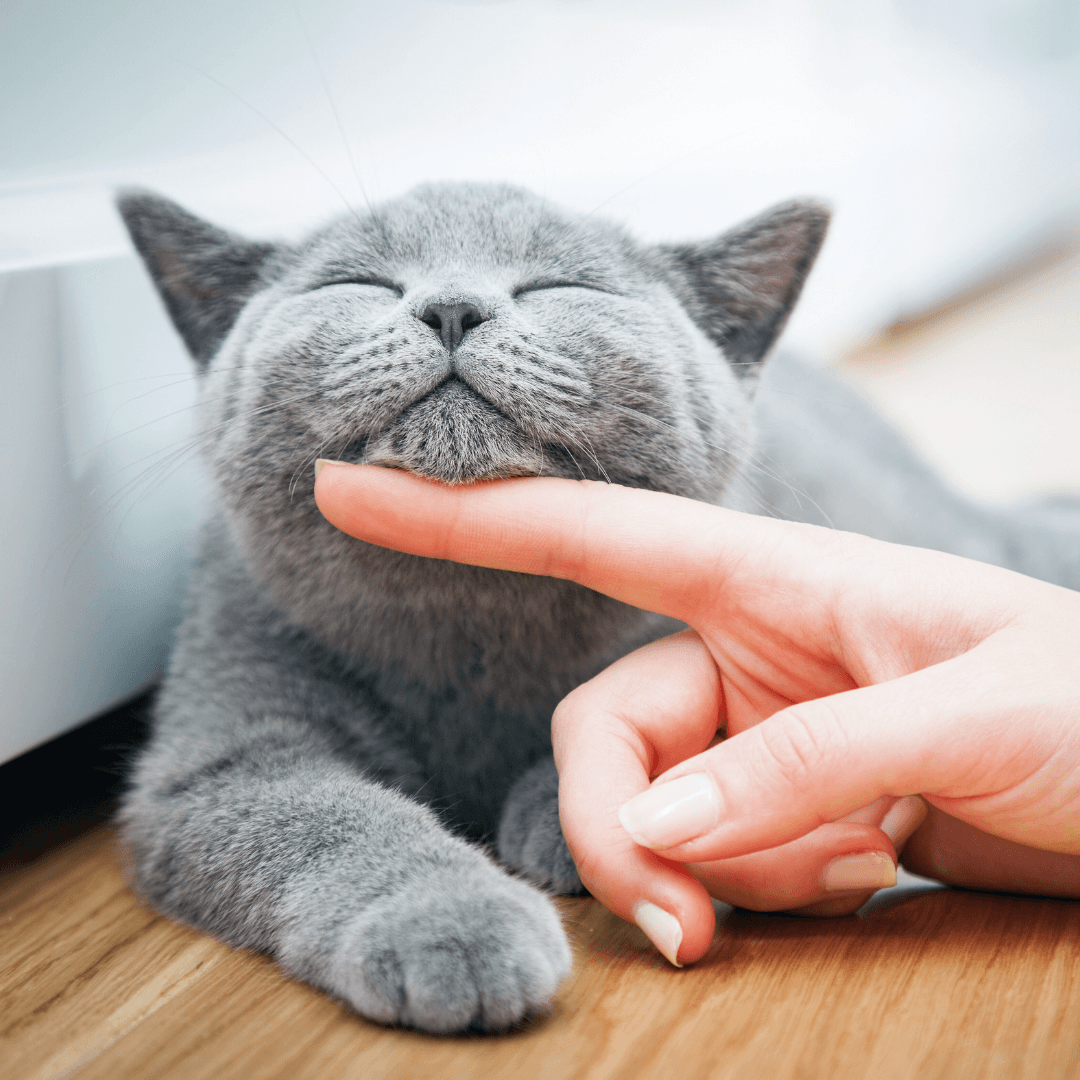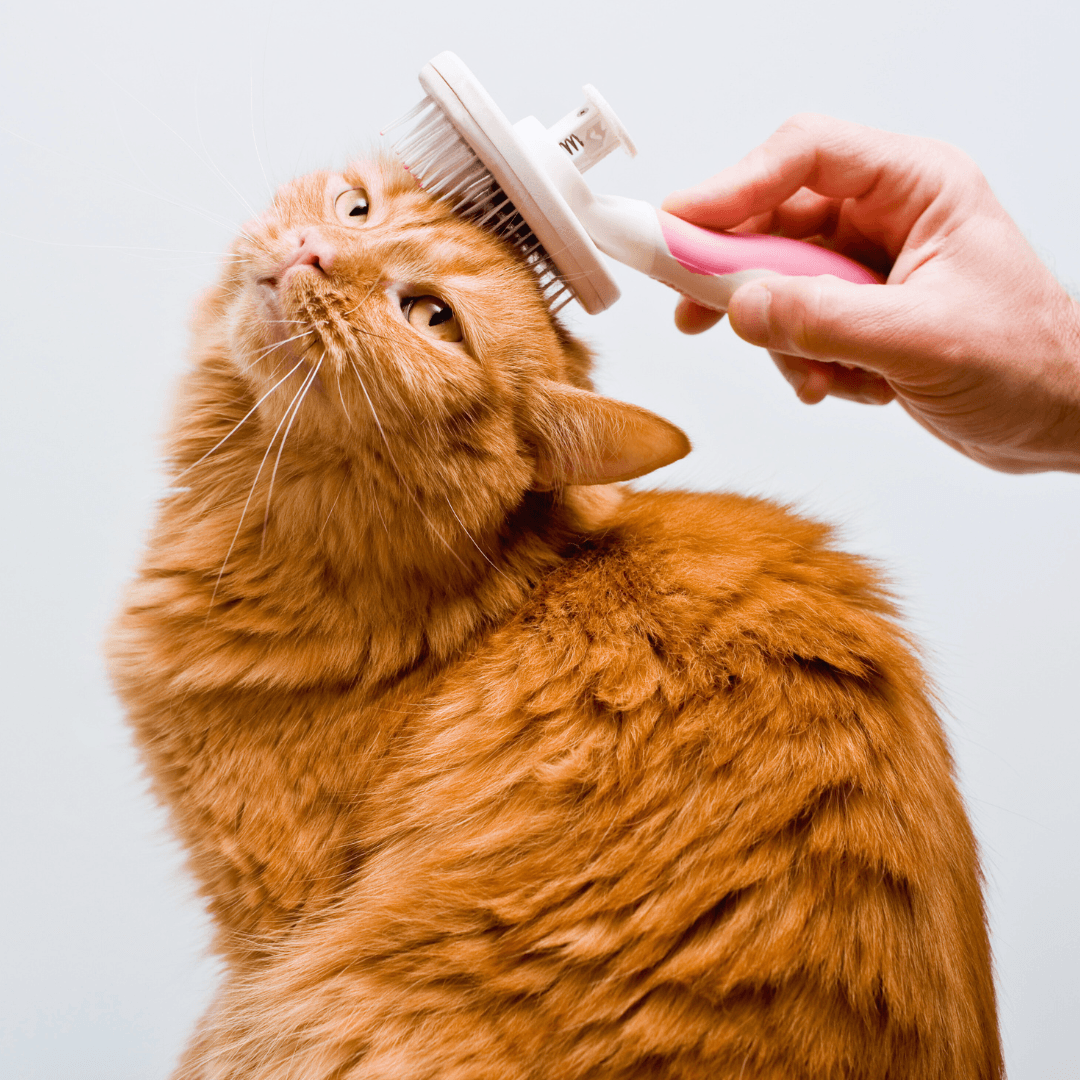Symptoms Of Stress In A Cat
Symptoms Of Stress In A Cat
Like people, cats can experience stress, impacting their general well-being and behaviour. Early signs are crucial for ensuring your feline friend stays healthy and happy.
Stress can take many forms in cats, ranging from altered feeding patterns to heightened aggression or withdrawal. Identifying cats' stress symptoms is imperative to provide them with the care and environment they require to feel less nervous.
This article will explore common stress symptoms in cats and how to help.

Introducing The Symptoms Of Stress In A Cat
Like humans, cats can experience stress, which often shows in their behaviour and health. Recognizing the signs early is key to helping them stay calm and healthy. Cats can display a variety of stress symptoms, including:

1. Changes In Appetite
Stress can significantly change a cat's eating habits. Some cats may lose their appetite entirely, leading to weight loss and nutritional deficiencies, while others may overeat as a form of self-soothing, resulting in weight gain.
These shifts in appetite often indicate emotional distress or anxiety, especially if no physical health issues are present. Monitoring your cat’s eating patterns can help you identify stress early and take steps to restore their sense of comfort.
2. Excessive Grooming
When stressed, cats may engage in excessive grooming to cope with anxiety. This behaviour, known as psychogenic alopecia, can lead to bald spots, irritated skin, or sores.
Overgrooming provides a temporary sense of relief for the cat, but over time, it can become a compulsive behaviour that exacerbates stress. If you see your cat grooming excessively or developing bald areas, it's crucial to tackle the root cause of their tension.

3. Aggression Or Withdrawal
Aggression or withdrawal are common symptoms of stress in cats. They react by lashing out or hiding from familiar people or pets. Alternatively, they may become withdrawn, hiding in quiet spots and avoiding interaction.
Both responses are coping mechanisms for anxiety. If you observe these changes in your cat’s behaviour, consider environmental factors or changes that might be causing them stress and create a safe, calm space for them to relax.
4. Increased Vocalization
Excessive meowing, yowling, or other vocalizations are common stress indicators in cats. If your typically quiet cat suddenly becomes much more vocal, it may be their way of communicating discomfort or seeking reassurance.
Cats may vocalize due to environmental changes, loneliness, or frustration. Observing when and where the vocalization occurs can help identify stress triggers, allowing you to comfort them or address the issue causing their anxiety.

5. Litter Box Issues
Cats may avoid the litter box or urinate in inappropriate places when stressed. This behaviour can result from anxiety, fear, or discomfort with environmental changes. Due to their chronic nature, cats might become stressed by minor disturbances and dislike using the litter box.
Medical issues should be ruled out first, but if none are present, the stress factor should be addressed by making the litter box environment more comfortable and providing a sense of security.
6. Digestive Problems
Stress in cats often manifests through physical symptoms like vomiting or diarrhea. Gastrointestinal distress can result from anxiety's disruption of the digestive system.
Intermittent or triggered symptoms, such as those brought on by loud noises, unfamiliar environments, or routine adjustments, are possible.
To rule out any underlying medical disorders, seeing a veterinarian is crucial if stomach issues continue. Reducing environmental stressors can also help alleviate digestive problems linked with anxiety.
7. Restlessness Or Pacing
A stressed cat may display restlessness, such as pacing, difficulty settling or appearing tense. They may wander from room to room, unable to relax, or constantly shift positions as if searching for comfort.
This behaviour is often a reaction to environmental changes, anxiety, or an unmet need, such as the desire for a safe, quiet space.
Providing a calm, secure environment with familiar scents and surroundings can help your cat feel more relaxed and reduce their stress-induced restlessness.

8. Clinginess
Clinginess or seeking extra attention can be considered symptoms of stress in a cat, as they may demand more affection and reassurance from their owners. They may follow you around the house, demand to be held or petted more often, and seek constant reassurance.
This behaviour can signal that your cat is anxious or insecure and is looking for comfort in your familiar presence. If you see this shift in them, you can help them de-stress by giving them additional affection and making their environment peaceful.
9. Decreased Energy Levels
Cats typically sleep a lot, but excessive lethargy or a noticeable drop in energy could be a sign of stress. A stressed cat may prefer to spend more time sleeping or resting than playing or participating in things they used to enjoy.
This behaviour may reflect their emotional strain and the body’s attempt to cope with anxiety. If your cat seems unusually tired, assessing their environment for stressors and ensuring their physical health is in good condition is important.
10. Panting Or Rapid Breathing
Cats' panting or rapid breathing is uncommon and usually indicates significant stress or discomfort. Cats may pant during extreme heat or after physical exertion, but if it happens in the absence of these factors, it can be a sign of anxiety.
Stressful events like vet visits, loud noises, or new environments may trigger this response. If panting persists, it's crucial to remove the stressor and consult a veterinarian to rule out underlying health issues and manage their stress levels.
11. Dilated Pupils
Dilated pupils are a common physical indicator of stress or fear in cats. When a cat is anxious, its pupils may become enlarged as part of the body's fight-or-flight response. Wide, alert eyes often accompany tense body language, indicating that the cat is on high alert and feeling threatened.
If your cat frequently shows dilated pupils in response to their surroundings, it's important to identify any stress triggers and create a calm, reassuring environment to help them feel secure.
12. Trembling Or Shaking
Trembling or shaking are clear symptoms of stress in a cat, often triggered by stressful events such as loud noises. This reaction may occur during stressful events like thunderstorms, fireworks, or visits to the vet. The trembling signifies that the cat is overwhelmed by anxiety and doesn’t feel safe in their environment.
If you notice your cat shaking, it’s essential to comfort it and provide a quiet, safe space to reduce stress. Gradual desensitization to triggers may help it cope better in the long term.

13. Changes In Body Posture
Cats display stress through body posture, often tensing their muscles or adopting defensive stances. A stressed cat may crouch low to the ground, with its tail tucked under or wrapped around its body, signalling fear or anxiety.
They may also hold their ears flat against their head, indicating discomfort. Observing these posture changes can help you identify when your cat feels unsafe or stressed. A quiet, secure space away from perceived threats can help them feel more relaxed.
14. Scratching Furniture More Often
Scratching is a natural behaviour for cats, but when stressed, they may scratch furniture or other surfaces more frequently.
This behaviour serves as both a stress reliever and a way to mark territory, which can provide comfort in an anxiety-inducing environment.
Scratching helps release tension and spread their scent, making them feel more in control of their surroundings. Providing scratching posts or pads and addressing the cause of their stress can help reduce excessive scratching behaviour.
15. Loss Of Interest In Play
When a cat loses interest in play or their usual activities, it may be a sign of stress. Cats are generally playful, especially with familiar toys or routines. Stress can cause them to disengage, showing little enthusiasm for things they once enjoyed.
This can indicate emotional strain or anxiety, particularly if there have been changes in their environment. Encouraging gentle play and providing a comforting environment can help restore their interest and reduce stress.
16. Increased Aggression Towards Other Pets
Stress can lead to increased aggression in cats, especially towards other pets. A stressed cat may become more territorial, hissing, swatting, or even attacking other animals in the household. This behaviour may result from anxiety, fear, or feeling threatened by changes in their environment or routine.
It's important to monitor interactions and create separate spaces if needed, allowing the stressed cat to feel more secure while working to reduce tension between them and other pets.
17. Excessive Shedding
Excessive shedding can be a physical response to stress in cats. While shedding is normal, an anxious cat may lose fur faster than usual. This is often a result of the body’s reaction to emotional distress or nervousness.
If you notice more fur on furniture or clothing, and the shedding isn’t linked to seasonal changes, it’s worth evaluating potential stressors in your cat’s environment. Providing a calm, stable atmosphere can help reduce this stress-related symptom.
18. Changes In Eye Contact
Changes in eye contact can be a subtle sign of stress in cats. Some stressed cats may avoid eye contact, signalling fear or discomfort, while others may stare intensely, indicating heightened alertness or anxiety.
Other signs like tense body language or dilated pupils often accompany this change in behaviour. Recognizing these shifts can help identify stress triggers in their environment, allowing you to address the issue and create a more reassuring, peaceful setting for your cat.

19. Sudden Weight Loss
Sudden, unexplained weight loss can be a sign of stress in cats. Stress may cause them to eat less or even lose interest in food entirely, leading to a rapid decline in weight. Watching what they eat and seeing a veterinarian if they start losing weight is vital because this can harm their health.
Identifying and reducing the sources of stress and providing a quiet, calm environment can help restore your cat’s weight and health.
20. Frequent Sneezing Or Coughing
Stress can weaken a cat’s immune system, making it more susceptible to respiratory issues like sneezing or coughing. These symptoms may appear more frequently when a cat is under significant stress, particularly if its environment has changed or it feels anxious.
Stress-induced respiratory problems should not be ignored, as they may require veterinary attention. Reducing stressors and ensuring your cat feels safe and comfortable can help alleviate these physical symptoms and boost their immune health.

21. Vocalizing During Grooming
If a cat begins to vocalize while grooming, it could be a sign of stress or discomfort. Grooming is usually a quiet, self-soothing activity, so any unusual sounds, like meows or growls, may indicate that the cat is feeling anxious or even experiencing pain.
This behaviour may also accompany excessive grooming, where stress leads to over-grooming or irritated skin. By watching when and why it happens, you can identify the source of the vocalization and take action to lessen their worry.
How To Calm A Stressed Cat
Calming a stressed cat requires patience and understanding. Here are effective ways to help:
1. Create A Safe Space
Creating a safe space can help alleviate some of a cat's stress symptoms by providing them with a comfortable environment to retreat to when feeling anxious.
This space should be away from loud noises and high traffic. Add soft bedding, toys, and familiar scents to create a comfortable environment. Providing this sanctuary allows your cat to relax and regain confidence when faced with anxiety-inducing situations.
2. Use Calming Pheromones
Calming pheromones, like Feliway, simulate the natural scents cats use to mark their territory as safe. These products come in diffusers, sprays, or collars and help create a sense of security in your home.
By releasing these pheromones, you can reduce your cat's anxiety and stress, making it feel more at ease in its environment.
3. Stick To Routines
Cats are creatures of habit and thrive on routine. Maintaining consistent feeding, playtime, and sleeping schedules helps reduce anxiety by providing stability.
When changes occur, minimize disruptions to your cat's daily routine. Predictability makes your cat feel more secure and less anxious, helping them adapt to new situations more easily.
4. Offer Gentle Affection
Offering gentle affection can significantly help calm a stressed cat. Allow your cat to approach you for attention, using slow movements to avoid startling them.
Soft strokes and gentle petting can reassure your cat, making them feel loved and safe. This bonding time fosters trust and can help alleviate their stress and anxiety.
5. Provide Enrichment
Engaging your cat with enrichment activities, like toys or puzzle feeders, helps distract them from stressors. Interactive toys encourage play, stimulate their mind, and prevent boredom.
Various activities keep your cat entertained and mentally challenged, reducing anxiety. This proactive approach fosters a positive environment where your cat can express natural behaviours and feel more relaxed.
6. Play Soft Music
Playing soft, calming music in your home can create a soothing atmosphere for your cat. Gentle sounds can help mask sudden noises that might cause anxiety, promoting relaxation.
Choose music designed for cats. Studies suggest that certain frequencies can be particularly calming. This small addition can significantly decrease stress levels.
7. Offer Comforting Touch
When comforting a stressed cat, gently stroke it along the back or under the chin, avoiding sensitive areas like the belly.
Watch for signs of relaxation, like purring or kneading. If it seems tense, allow it to come to you when you are ready for more interaction.
8. Consider Natural Supplements
Natural calming supplements for cats, like L-theanine (found in green tea) and valerian root, can reduce anxiety by promoting relaxation without sedation. Other options include chamomile or tryptophan-based supplements.
Always consult your veterinarian before using the supplements to ensure they are safe and appropriate for your cat's needs.
FAQ
1. Can Stress In Cats Lead To Health Issues?
Yes, stress can lead to urinary tract infections, gastrointestinal issues, and skin problems.
2. How Can I Tell If My Cat's Stress Is Serious Enough For A Vet Visit?
If your cat persistently hides, has not eaten for more than 24 hours, or shows signs of illness, consult a veterinarian.
3. Are There Any Natural Remedies To Help Calm My Stressed Cat?
Natural options include pheromone diffusers, calming sprays, and supplements like L-theanine or valerian root, but it’s always best to consult a vet before trying new treatments.
4. Can My Stress Affect My Cat?
Yes, cats are sensitive to their owners' emotions. If you're stressed or anxious, your cat may pick up on these cues and become stressed.
5. How Long Does It Take For A Stressed Cat To Calm Down?
The time it takes depends on the individual cat and the stressor. Some cats may calm down within a few hours, while others may take days or weeks, especially after significant changes like moving to a new home.
6. Can Diet Affect My Cat's Stress Levels?
Yes, diet plays a role in overall well-being, including stress. Calming components like omega-3 fatty acids and tryptophan can be included in some cat meals, which may help lessen anxiety.
Conclusion
Recognizing a cat's stress symptoms is crucial for ensuring its overall well-being and mental health. Creating a calming environment, maintaining routines, and providing enrichment can significantly help reduce stress levels.
Always consult a veterinarian if your cat’s stress persists. They can offer tailored solutions. By prioritizing your cat's mental health, you can foster a happier, healthier, and more secure feline companion.
I trust you enjoyed this article on Symptoms Of Stress In A Cat. Stay tuned for more blog posts soon. Take care!
JeannetteZ
Your Opinion Is Important To Me
Do you have thoughts, ideas, or questions? I would love to hear from you. Please leave me your questions, experiences, and remarks about this article, Symptoms Of Stress In A Cat, in the comments section below. You can also email me at Jeannette@Close-To-Nature.org.
Disclosure
This post may contain affiliate links. As an Amazon Associate and other affiliate programs, I earn from qualifying purchases at no extra cost to you. Please read my full affiliate disclosure.
You might also enjoy these blog posts:
Exploring Animal Communication: What Your Pet Is Trying To Tell You
Common Symptoms Of Stress In A Dog You Shouldn’t Ignore
Interesting Facts About White-Tailed Deer
Largest Owls In The World: Majestic Giants Of The Wild
Interesting Facts About Owls That Will Fascinate You






